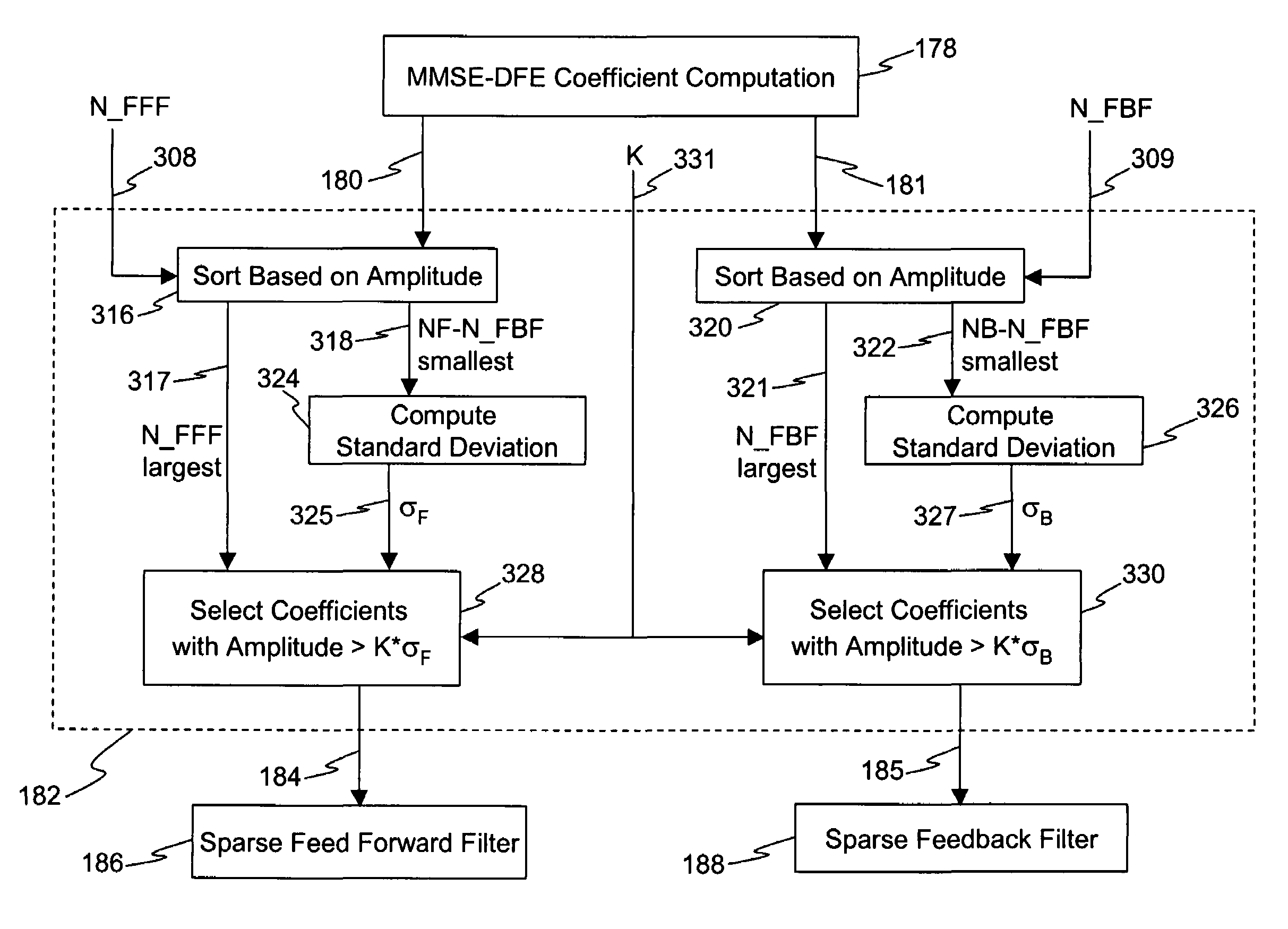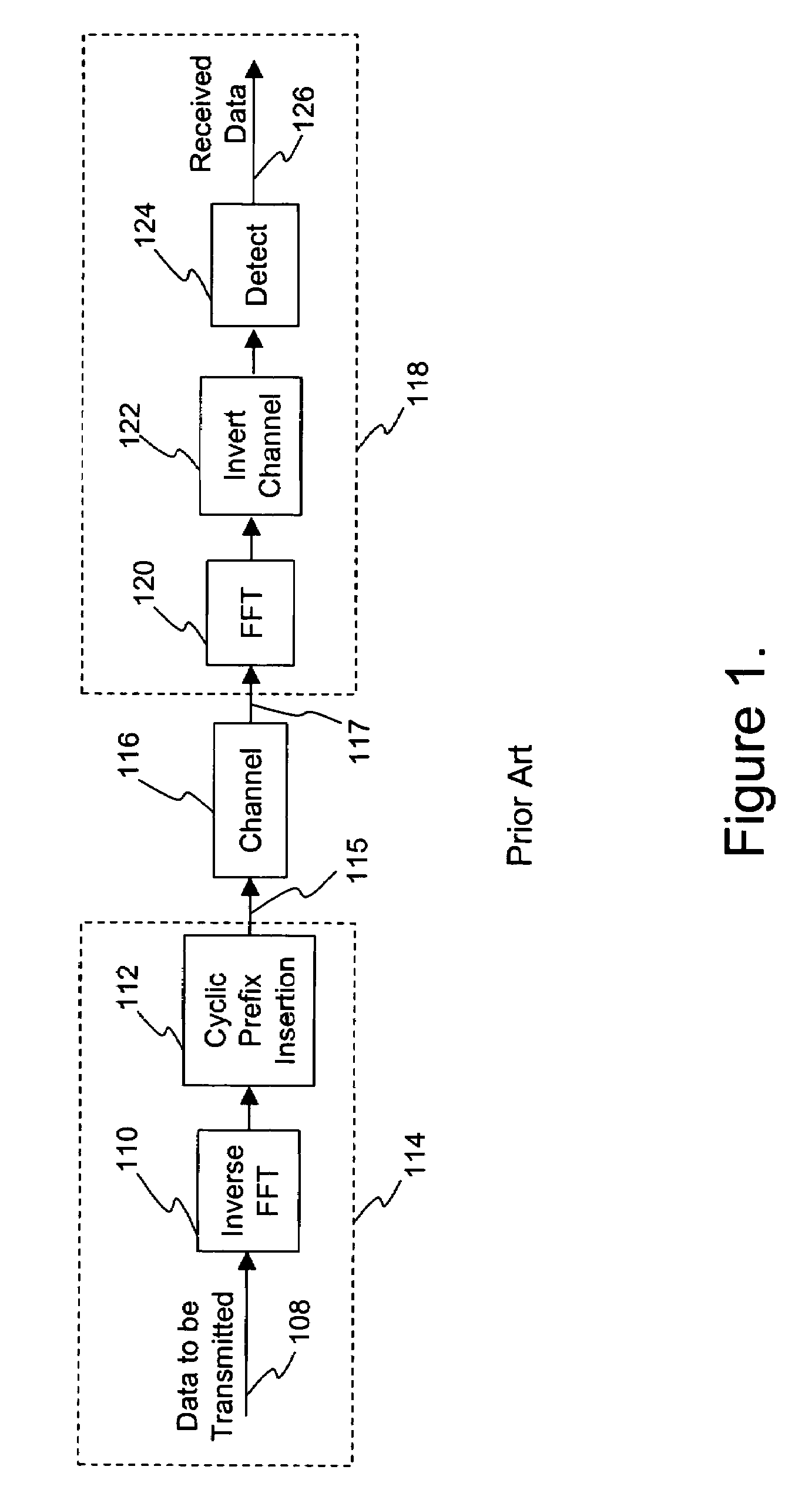Method and apparatus for single burst equalization of single carrier signals in broadband wireless access systems
a broadband wireless access system and single-band equalization technology, applied in the field of single-band equalization of single-band carrier signals in broadband wireless access systems, can solve the problem of limiting bandwidth efficiency, achieve the effect of reducing the number of single-band rfs, facilitating the implementation of filters, and facilitating the reception of individual single-band rfs
- Summary
- Abstract
- Description
- Claims
- Application Information
AI Technical Summary
Benefits of technology
Problems solved by technology
Method used
Image
Examples
Embodiment Construction
[0023]A significant problem is created by both the OFDM and SC-FDE methods due to their reliance on the large block FFT operation. The problem, not recognized, is that the large block FFT operation restricts the efficiency of time division duplexing (TDD) and time division multiple access (TDMA) techniques. Modern TDD / TDMA techniques provide the opportunity for efficient use of a single RF channel for both downlink and uplink burst communication. For example, adaptive TDD / TDMA techniques, are defined in the IEEE Standard 802.16™-2001. In the adaptive TDD technique the position in time of the border separating a TDD frame's downlink and uplink traffic is adapted to best suit the relative amount of downlink and uplink traffic. It is well known that when properly implemented adaptive TDD is more spectrally efficient than the older frequency domain duplexing (FDD) technique which simply uses 2 RF channels, one for downlink and one for uplink. Proper utilization of TDD / TDMA techniques, h...
PUM
 Login to View More
Login to View More Abstract
Description
Claims
Application Information
 Login to View More
Login to View More - R&D
- Intellectual Property
- Life Sciences
- Materials
- Tech Scout
- Unparalleled Data Quality
- Higher Quality Content
- 60% Fewer Hallucinations
Browse by: Latest US Patents, China's latest patents, Technical Efficacy Thesaurus, Application Domain, Technology Topic, Popular Technical Reports.
© 2025 PatSnap. All rights reserved.Legal|Privacy policy|Modern Slavery Act Transparency Statement|Sitemap|About US| Contact US: help@patsnap.com



